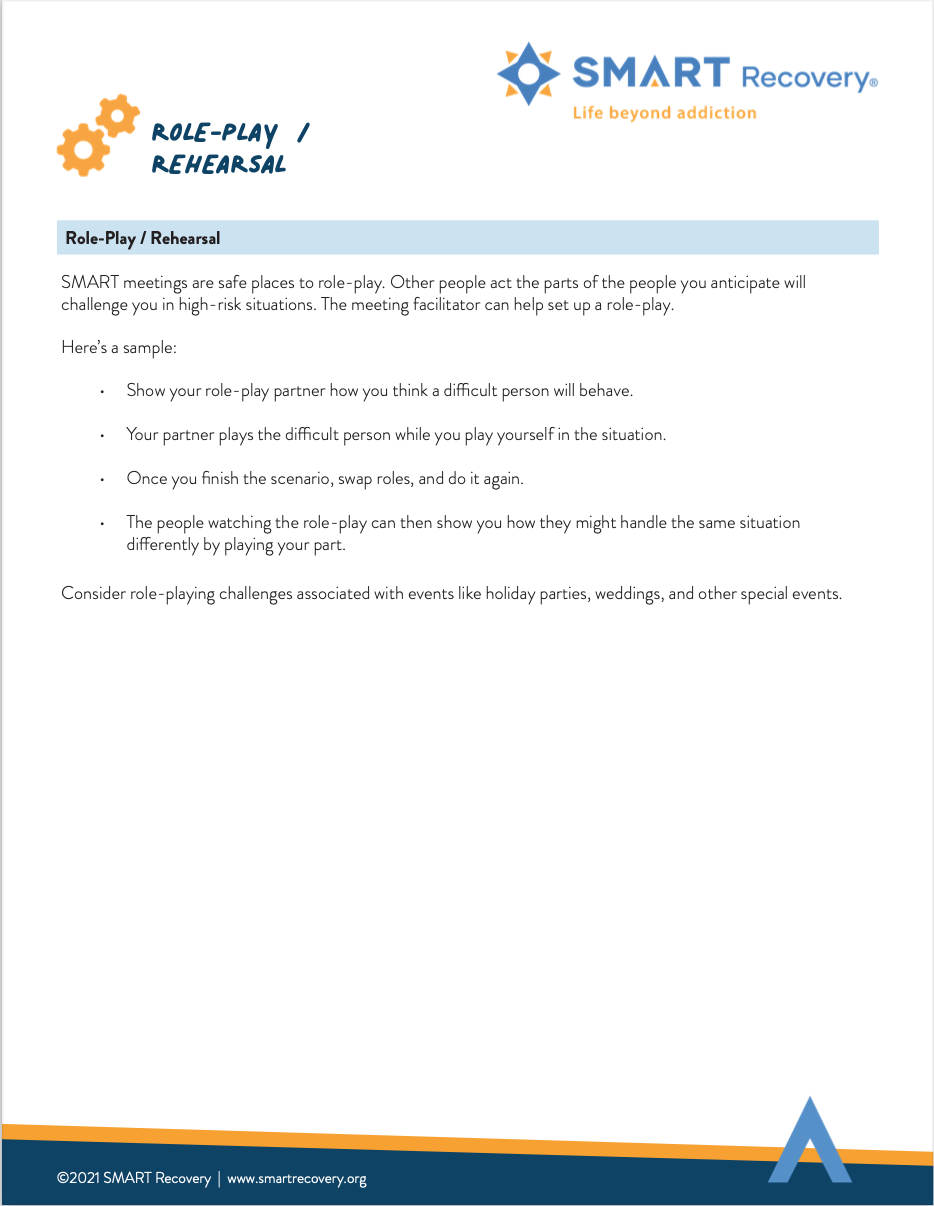Point 2, Point 3
When to use this tool: When a person feels anxious that they may be in a situation where his or her new desired behaviors may be challenged.
Example of its use in a SMART meeting: Imagine a person who is quitting the use of alcohol and has been invited to a wedding reception where alcohol will be served. S/he is anxious for any one of several reasons that s/he might be tempted to use. In this situation, we will create a script that will loosely simulate the situation and practice the new behavior dialogue we wish to learn. This scenario involves two people: our participant and another person.
ROLE PLAYING SCENARIO #1:
- Companion: “Would you like some champagne?”
- Participant: (looks at questioner, makes eye contact, uses name, smiles, and says: “I would like something to drink but something non-alcoholic please. Do they have 7-Up or juice of some kind? Maybe iced tea?” (See below for a tip.)
- Sometimes a problem arises because in situations where there is alcohol and one is offered a drink, we are in the habit of thinking of something that has alcohol in it and— under pressure—can’t think of anything that doesn’t have alcohol.
- TIP: BE READY! If the choice is a “drink”, practice saying ten or twelve different drinks that are alcohol-free, such as: Lemonade, iced tea, Pepsi, 7-Up, ginger ale, coffee, tea, chocolate milk, orange juice, fruit juice, anything non-alcoholic, water (exotic—with ice and a twist), mineral water, with a twist—very exotic.
ROLE PLAYING SCENARIO #2:
- Here our non-user (NU) arrives at the wedding reception alone. S/he must walk into an unfamiliar situation and participate. In the past there has been something in his/her hand—a drink, a cigarette, etc. There is a need to do what other people are doing. Holding a book might work or putting their hands in their (own) pockets. If there is a waiter cruising with drinks, the dialog might go something like this:
- Waiter: “Champagne?”
- NU: (Looks at nametag, or if there is no tag, asks the waiter their name and repeats the previously mentioned dialog.)
To practice the role playing:
- Break up the whole group into pairs.
- The leader first models the desired behavior of both roles.
- All the pairs practice, each person playing both the role of the participant and the role of the waiter/companion. All people in the group participate (to avoid the “goldfish bowl” performance effect). It is better to have the pairs all play through the cycle (one cycle is where each person has played both roles) at least twice— three times is even better. Pairs can monitor their proficiency by the fluency of their own responses.
Try to set aside another time later during the meeting to practice this a second time. This practice is brief and should be easy to do. If there’s time it might be a good idea to briefly practice the roles at the next meeting.
NOTE FROM THE AUTHOR: We’ve used this a few times in our meetings, and each time our participants were VERY PLEASED with their new skills and felt more confident in their ability to face other situations where they might be tempted.
Helpful Links
- Public-Facing Toolbox Page: www.smartrecovery.org/role-play
- Video Link: https://youtu.be/_i1dya5cOLk


